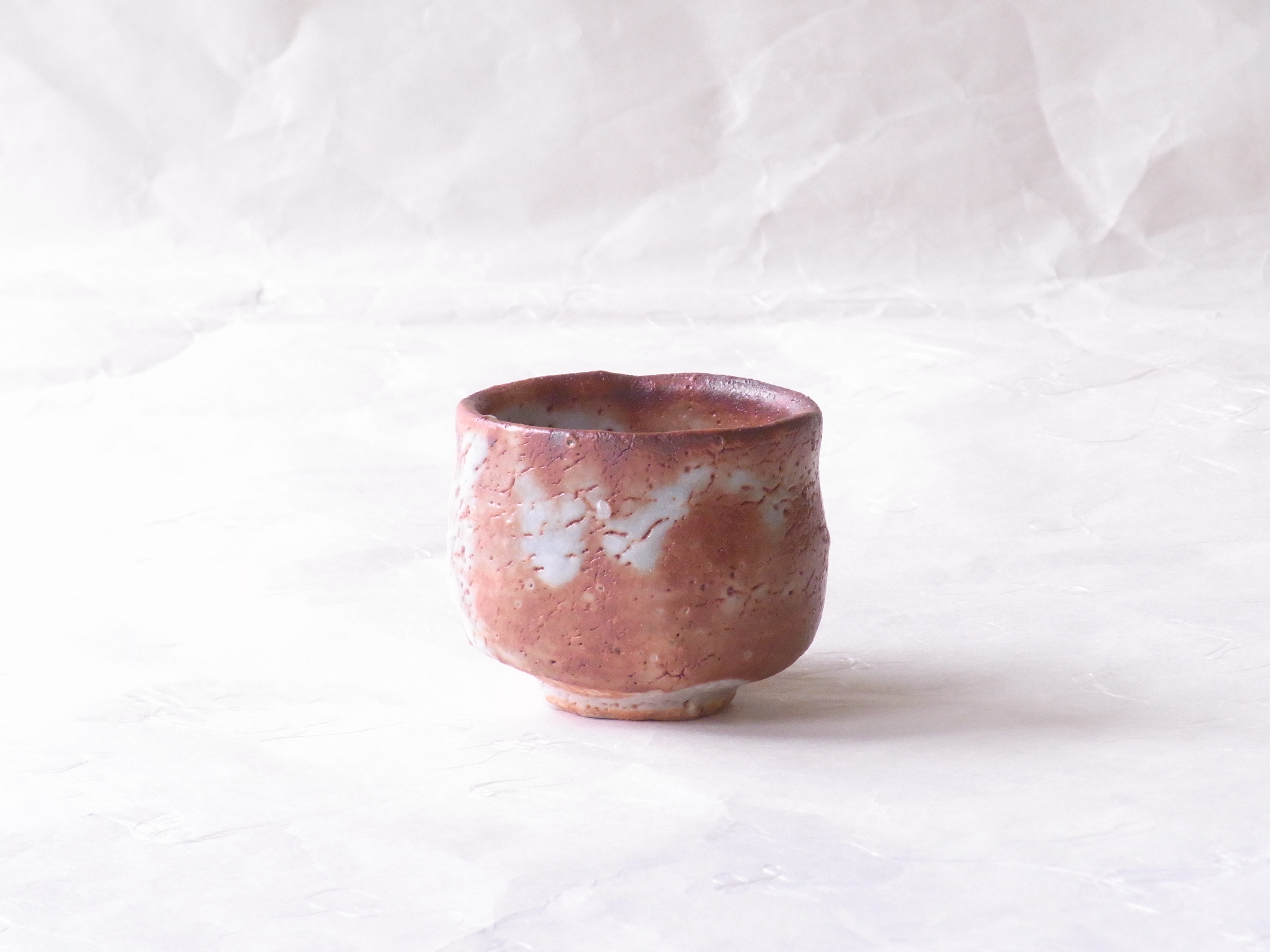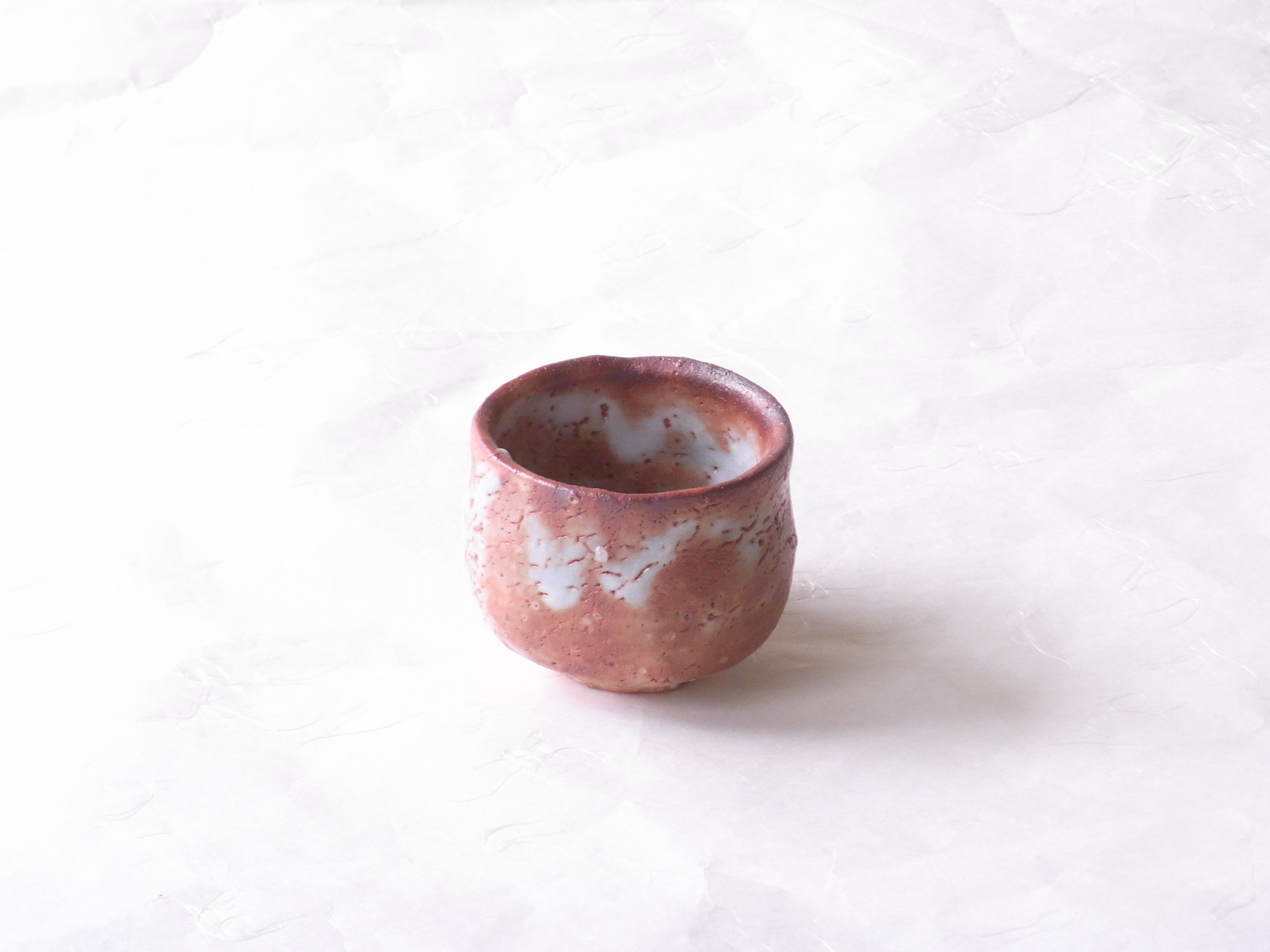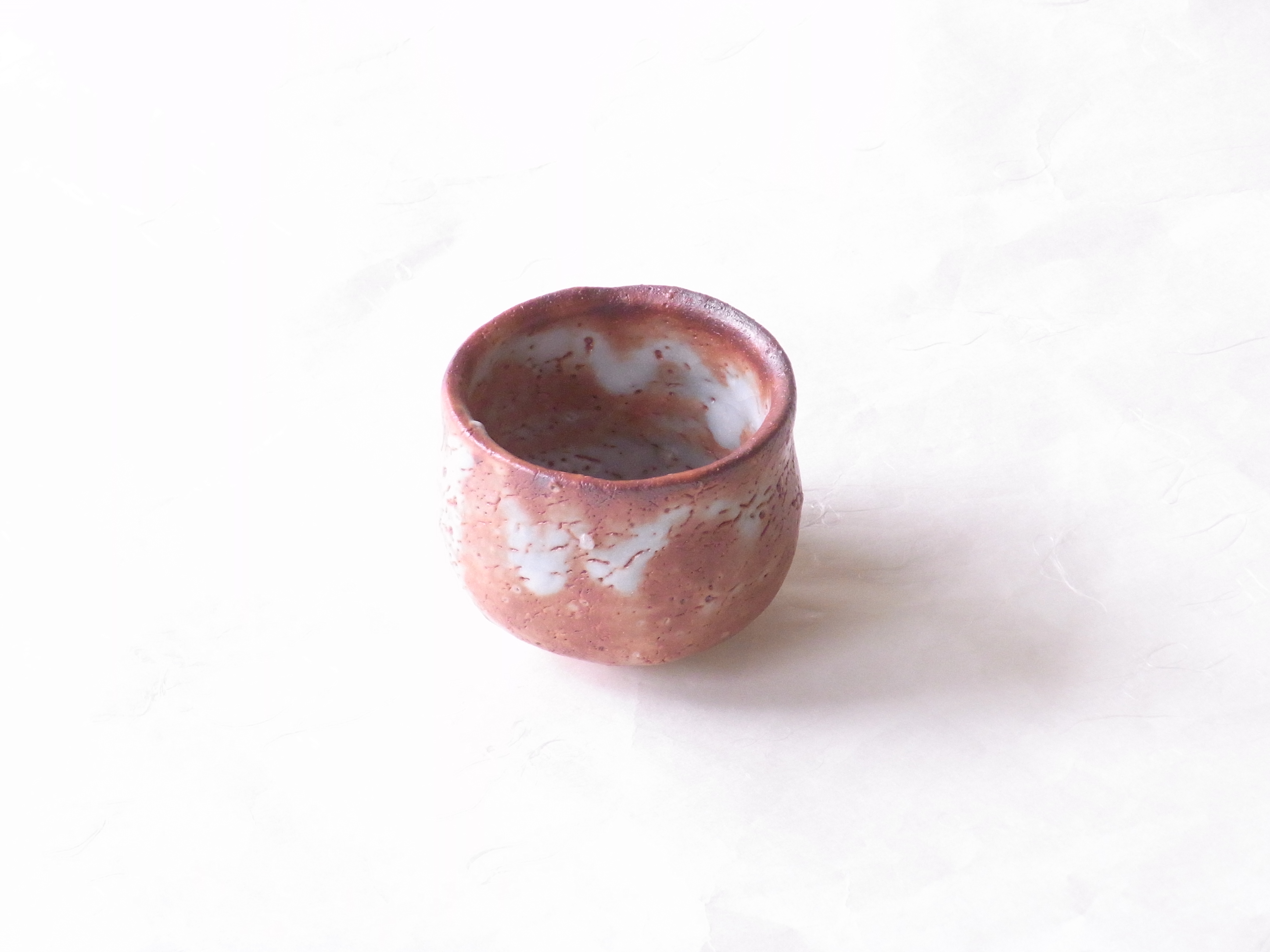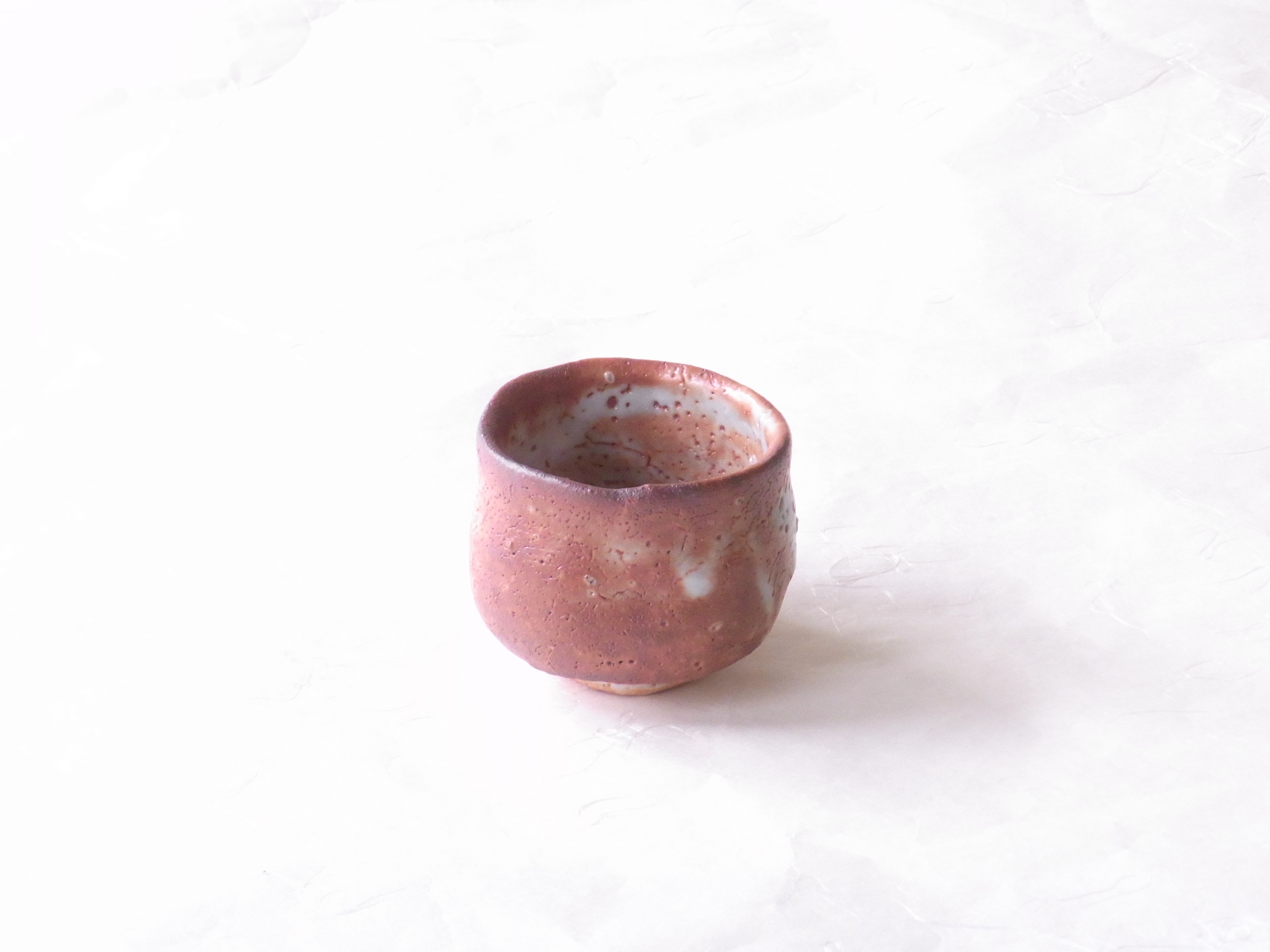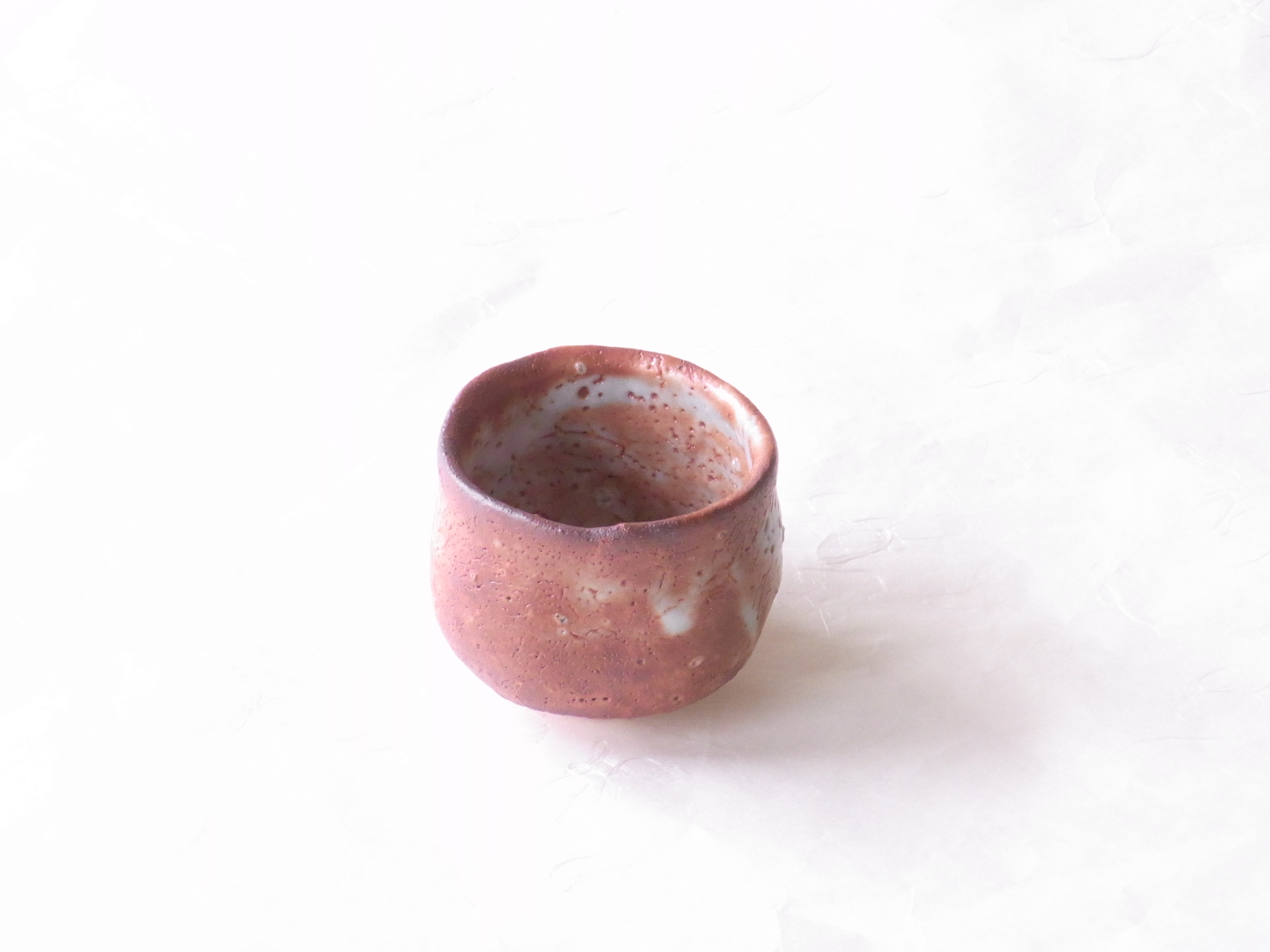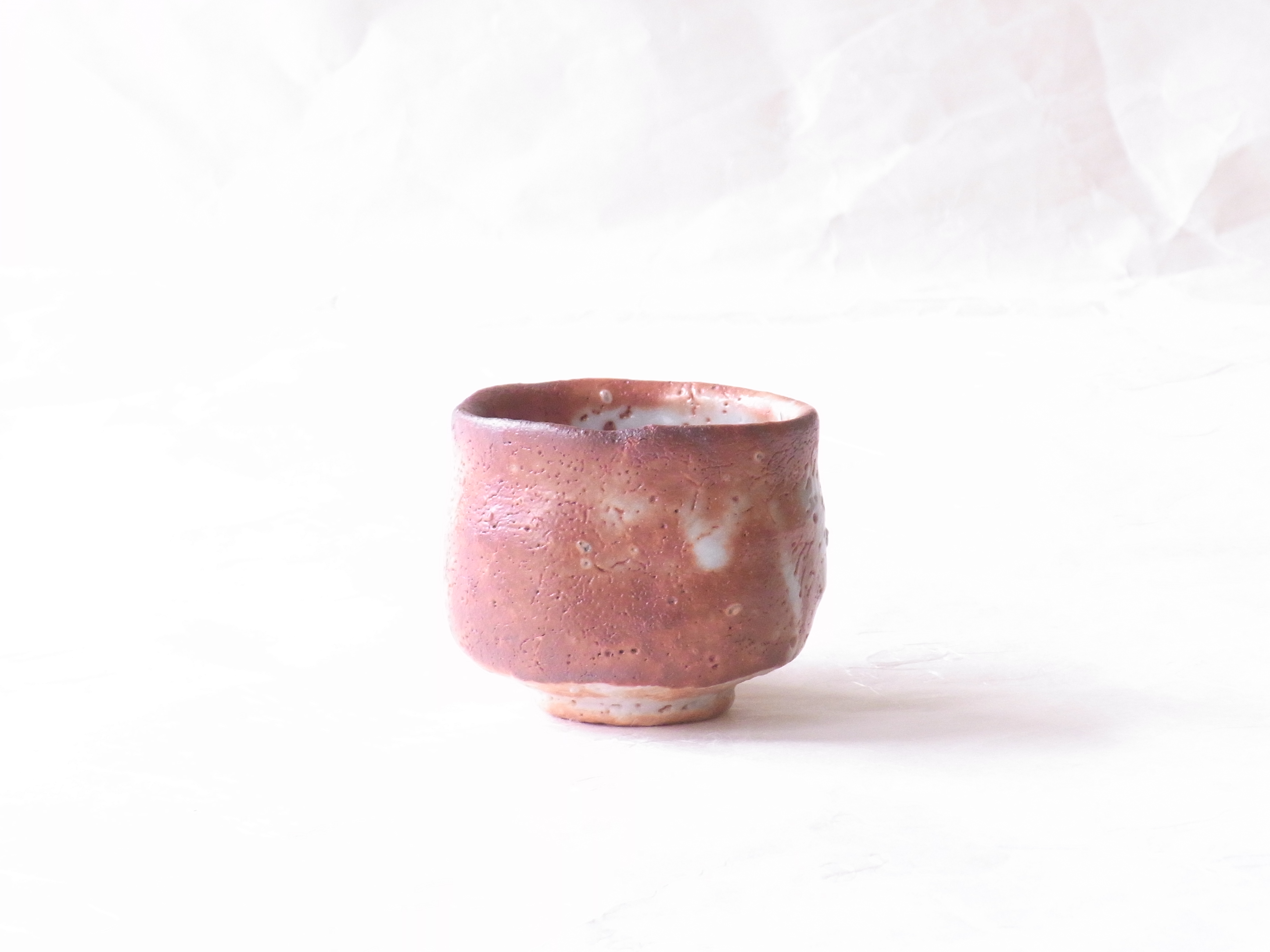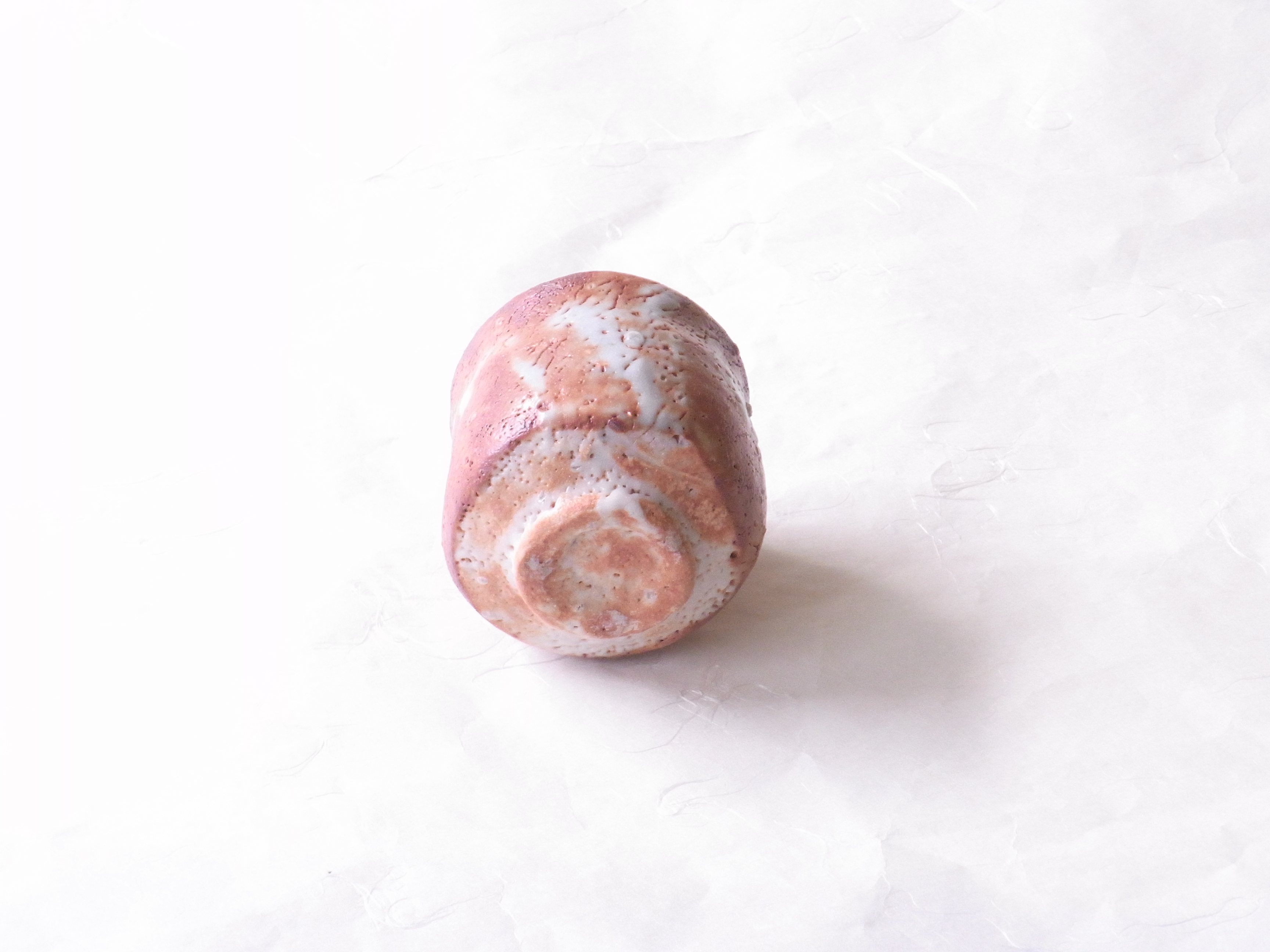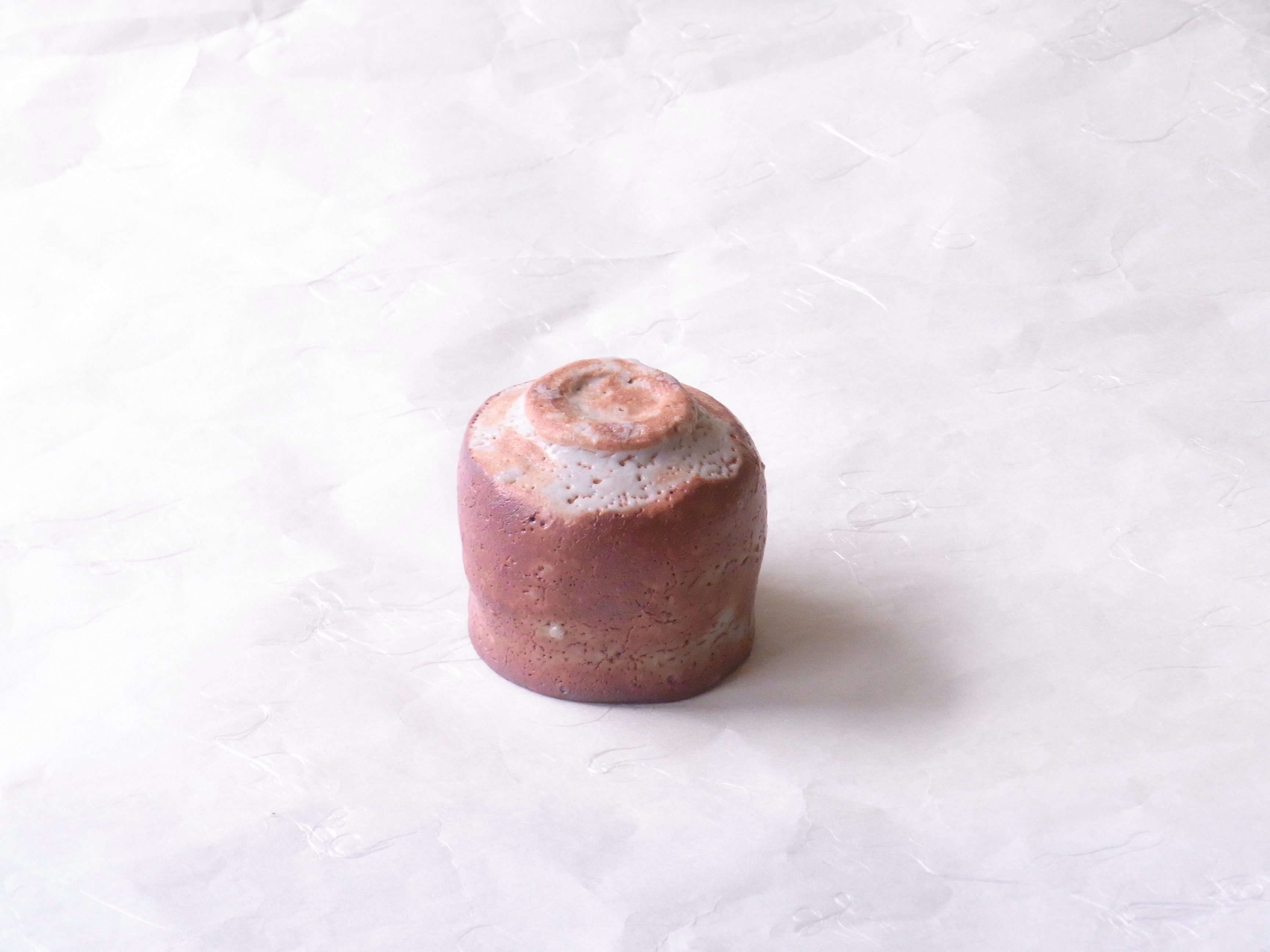美濃焼から林亮次 荘山窯の赤志野のぐい呑みのご紹介です。
美濃焼の代名詞ともいえる、志野焼のぐい呑みです。
志野焼は大変手間のかかる焼き方をするため
専門のノウハウがあり、独自の技術が必要となります。
従って、他の産地で真似て作ることは、非常に難しくなっています。
そのため志野焼は、美濃焼でしか見られなくなっており
美濃焼独自の焼き物となっています。
その作風も、釉薬の裂けた様子や、微妙な色あい、持った時の手触り
全体の風合いも、独特の力強いものとなっています。
人が完全にコントロールできない、焼き物の独自の世界がそこにはあります。
気温や湿度、天候などの様々な条件で変化して、同じものが絶対に出来ない
独自の炎の芸術といっても過言ではありません。
力強いイメージで作られており、微妙な釉薬の色合いと
焼成で裂けた釉薬が志野独特の世界観を作りあげています。
赤志野は他の志野とは作り方が違うのか、高台の部分の土が
むき出しになっておらず、釉薬がかかっていて、はっきりと分かりませんが
赤っぽい土が使われているようです。
全体は赤茶色の色が出ており、正面は鼠色の釉薬が出ていて
なぜか内側は鼠色の部分が多くなっています。
釉薬が裂けている部分よりも、ピンホールの方が多いような感じです。
亀裂はあるにはありますが、他の志野のように、生地が見えるほど
深い亀裂はほとんどなく、細かく浅いひびが多くなっています。
所々に半透明な出っ張りが複数見られ、表面は独特な状態になっています。
白志野や紅志野とは、全く異なる風合いとなっており
赤黒く焼け焦げたように、変色している部分もあり、趣きがあります。
高台付近はなぜか白っぽくピンホールが多数存在し、様々な釉薬が
複雑に入り混じっており、見ていても飽きることがありません。
どっしりとして、存在感のあるぐい呑みと言えます。
幅 6.5㎝ 奥行 6㎝ 高さ 5.5㎝
This is an introduction to the Gui-no-Gui-no-Gui-no-Sumi of the Akashino kiln from Mino Ware to Hayashi Yuji Shozan Kiln.
It is a gui-tei of Shino ware which can be said to be synonymous with Mino ware.
Shino ware is a very laborious way to bake
We have specialized know-how and require unique technology.
Therefore, it is very difficult to imitate and make in other production areas.
Therefore, Shino ware can only be seen in Mino ware.
It is mino ware’s original pottery.
The style is also the tear of glaze, subtle color, feel when you have
The overall texture is also unique and powerful.
There is a unique world of pottery that a person cannot completely control.
It changes in various conditions such as temperature, humidity, weather, etc., and the same thing cannever be done.
It is not an exaggeration to say that it is the art of its own flame.
Made of a powerful image, and with subtle glaze shades
Glaze sipped by firing creates A unique view of the world in Shino.
Is Akashino different from other Shino’s, the soil of the high-rise part?
It’s not bare, it’s glazed, and I don’t know for sure.
It seems that redy soil is used.
The whole is red-brown, and the front has a scarlet glaze.
For some reason, there are a lot of orange parts on the inside.
It is a feeling that there are more pinholes than the part where the glaze is torn.
There are cracks, but like other Shino, the fabric can be seen.
There are few deep cracks, and there are many fine and shallow cracks.
In some places, there are several translucent overhangs, and the surface is in a unique state.
It has a completely different texture from Shirashino and Koshino.
There is a part that is discolored, too, and it is tasteful like burning red and black.
There are a lot of pinholes in the vicinity of the hill, and various glazes exist for some reason.
It’s complicated and mixed, and you won’t get tired of watching it.
It can be said that it is a jerk with a presence as a heavy.
這是從米諾陶器到林裕治·索山窯的赤石野的Guimi的介紹。
可以說,這是米諾陶器的代名詞。
希諾陶器是一個非常耗時的烘烤方法
我們擁有專業知識,需要獨特的技術。
因此,在其他生產地區模仿和製作它們是非常困難的。
因此,Shinoyaki 不再只在米諾陶器中看到。
它已成為米諾陶器自己的陶器。
其風格,釉料的撕裂,微妙的顏色,觸摸時,有
整體質地也已成為一個獨特的強大。
有它自己的陶器世界,人們不能完全控制。
在溫度、濕度和天氣等各種條件下變化,不可能有同樣的事情。
可以毫不誇張地說,這是你自己的火焰藝術。
由強大的圖像,微妙的釉面色調和
釉料,通過燒制撕裂,創造了一個獨特的世界觀,在Shino。
赤志野的製作方式與其他志野不同,高原部分的土壤
沒出來,釉面,我不太清楚。
紅色的土壤似乎被使用。
整個顏色是紅褐色的,前面有釉料。
出於某種原因,裡面有很多猩紅。
針孔似乎比釉料撕裂的部分要多。
有裂縫,但像其他志野,織物似乎
幾乎沒有深裂縫,細淺的裂縫越來越多。
在一個地方,可以看到幾個半透明的拉伸,表面處於獨特的狀態。
與白石野和紅石野完全不同。
有一個部分變色,如燒焦的紅色和黑色,有一個味道。
在高臺附近,有很多白色針孔,為什麼,各種釉料
它很複雜,即使看起來也沒什麼可厭煩的。
可以說,這是一個存在的怨恨。
